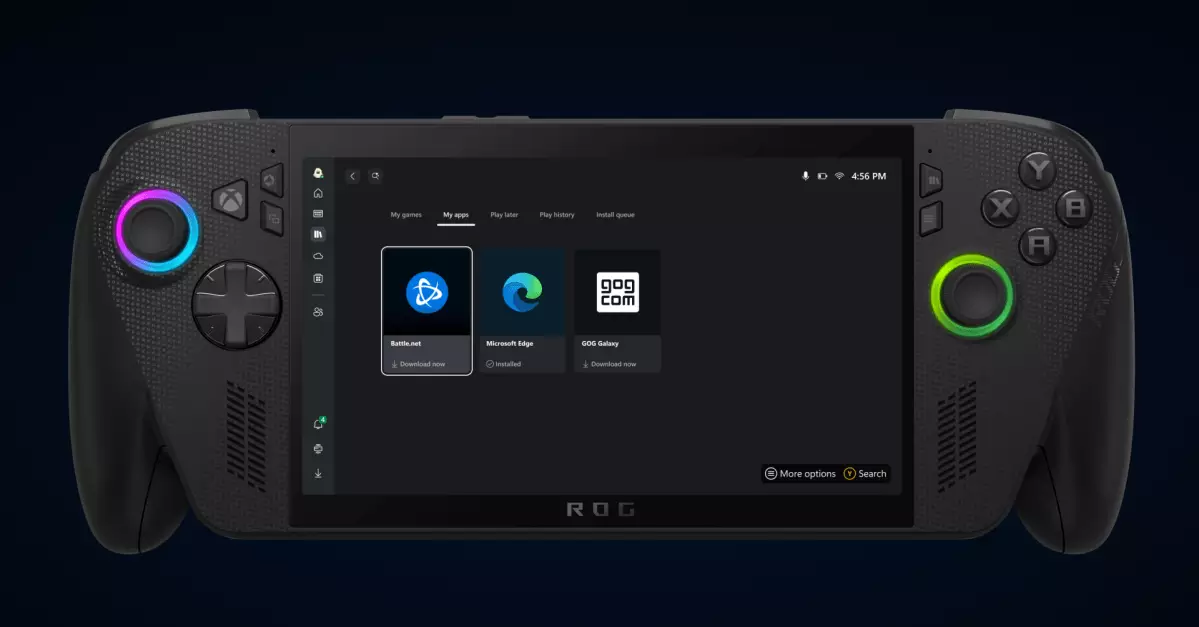Microsoft continues to challenge the traditional boundaries of PC gaming by integrating third-party applications directly into its Xbox ecosystem. The recent introduction of the “My Apps” section within the Xbox app for Windows 11 doesn’t just aim to streamline user experience — it signifies a paradigm shift in how gaming and productivity tools coexist on a single platform. This feature’s core promise is convenience, but its implications reach far beyond mere ease of access. It presents a bold vision of an open, flexible gaming environment where players are no longer beholden to the Microsoft Store or the Windows desktop, but can instead manage multiple applications seamlessly from a dedicated hub.
This move reveals Microsoft’s strategic intent to centralize and simplify the gaming experience, especially on handheld devices like the upcoming Xbox Ally. By consolidating browsers, utility apps, and rival storefronts like Steam or GOG Galaxy into one interface, Microsoft is effectively transforming the Xbox app into a gateway for all critical tools a gamer might need. This isn’t merely about convenience; it’s about redefining how players interact with their digital ecosystems. The integration of third-party apps within a gaming-centric interface signifies a bold acknowledgment of the diverse needs of modern gamers and a recognition that users value streamlined access over fragmented, cluttered workflows.
Breaking Down Barriers: The Power of a Unified Ecosystem
Historically, gaming platforms have been insular, often restricting users within their specific ecosystems. Microsoft’s approach with “My Apps” defies this tradition by encouraging a more open ecosystem that respects user choice and autonomy. By allowing access to rival storefronts and essential tools without navigating multiple windows or disparate apps, Microsoft is fostering a more inclusive environment. Gamers are no longer just consumers of Microsoft’s exclusive offerings but active participants who can easily access all their favorite services in a single place.
This approach also subtly undermines the monopolistic tendencies often associated with digital storefronts. By supporting third-party applications within the Xbox app, Microsoft appears to be advocating for a more competitive landscape — one where users freely pick and choose platforms, utilities, and services based on their preferences rather than ecosystem limitations. The notion of a “unified gaming library” becoming a central hub for all applications might set a precedent that could influence other tech giants to follow suit, encouraging a broader shift toward user-centric, versatile gaming environments.
The Challenges and Opportunities of a Unified Application Hub
While the potential benefits are impressive, the current beta implementation exposes significant challenges. During initial testing, applications like GOG Galaxy encounter bugs — installations can fail, and the process isn’t yet fully reliable. These technical hiccups highlight the complexity inherent in integrating third-party software into a controlled environment, especially when aiming for a seamless, handheld-friendly experience.
However, this is the nature of innovation. Microsoft’s willingness to test, refine, and expand “My Apps” demonstrates a commitment to evolving the concept based on real user feedback. For the concept to truly transform, Microsoft must iron out these technical issues and ensure stability and security across all applications. If they succeed, the benefits are enormous: a cohesive, portable, and highly customizable gaming experience that rivals traditional desktop setups.
Furthermore, Microsoft’s initiative pushes the boundary of what a gaming platform can be. It hints at a future where gaming devices are less about fixed environments and more about adaptable, all-in-one digital hubs. The potential to run browsers, utilities, and other essential apps on a handheld device without switching between multiple platforms could redefine portable computing in the gaming sphere.
Microsoft’s “My Apps” feature is more than just a new interface; it’s a declaration of intent. It signals an era where gaming platforms will be less insular, more collaborative, and intensely user-centric. By integrating third-party apps within the Xbox ecosystem, Microsoft is breaking down barriers that have constrained gamers for decades, paving the way for a more dynamic, flexible, and personalized experience.
This initiative stands as a testament to Microsoft’s vision of transforming Xbox from a solely gaming console into a universal hub of digital activity on Windows 11. If executed well, “My Apps” could become a game-changer — shifting the narrative from rigid ecosystems to fluid, user-empowered environments. The road ahead is fraught with technical hurdles, but the potential rewards make this a venture worth watching closely. It’s a bold step toward a future where gaming and everyday computing merge more seamlessly — and for many, that future cannot come soon enough.

